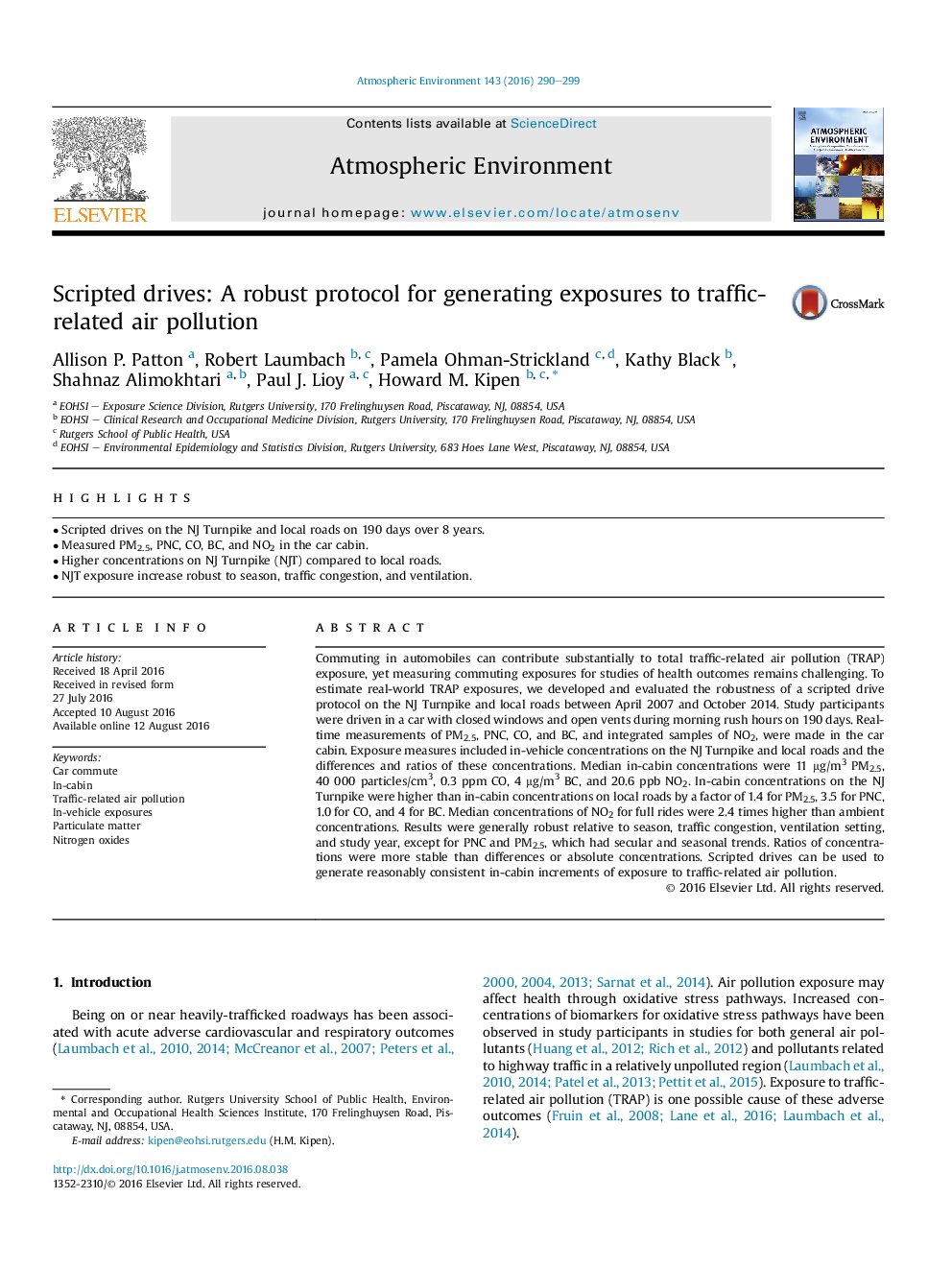| Article ID | Journal | Published Year | Pages | File Type |
|---|---|---|---|---|
| 6335960 | Atmospheric Environment | 2016 | 10 Pages |
Abstract
Commuting in automobiles can contribute substantially to total traffic-related air pollution (TRAP) exposure, yet measuring commuting exposures for studies of health outcomes remains challenging. To estimate real-world TRAP exposures, we developed and evaluated the robustness of a scripted drive protocol on the NJ Turnpike and local roads between April 2007 and October 2014. Study participants were driven in a car with closed windows and open vents during morning rush hours on 190 days. Real-time measurements of PM2.5, PNC, CO, and BC, and integrated samples of NO2, were made in the car cabin. Exposure measures included in-vehicle concentrations on the NJ Turnpike and local roads and the differences and ratios of these concentrations. Median in-cabin concentrations were 11 μg/m3 PM2.5, 40 000 particles/cm3, 0.3 ppm CO, 4 μg/m3 BC, and 20.6 ppb NO2. In-cabin concentrations on the NJ Turnpike were higher than in-cabin concentrations on local roads by a factor of 1.4 for PM2.5, 3.5 for PNC, 1.0 for CO, and 4 for BC. Median concentrations of NO2 for full rides were 2.4 times higher than ambient concentrations. Results were generally robust relative to season, traffic congestion, ventilation setting, and study year, except for PNC and PM2.5, which had secular and seasonal trends. Ratios of concentrations were more stable than differences or absolute concentrations. Scripted drives can be used to generate reasonably consistent in-cabin increments of exposure to traffic-related air pollution.
Related Topics
Physical Sciences and Engineering
Earth and Planetary Sciences
Atmospheric Science
Authors
Allison P. Patton, Robert Laumbach, Pamela Ohman-Strickland, Kathy Black, Shahnaz Alimokhtari, Paul J. Lioy, Howard M. Kipen,
